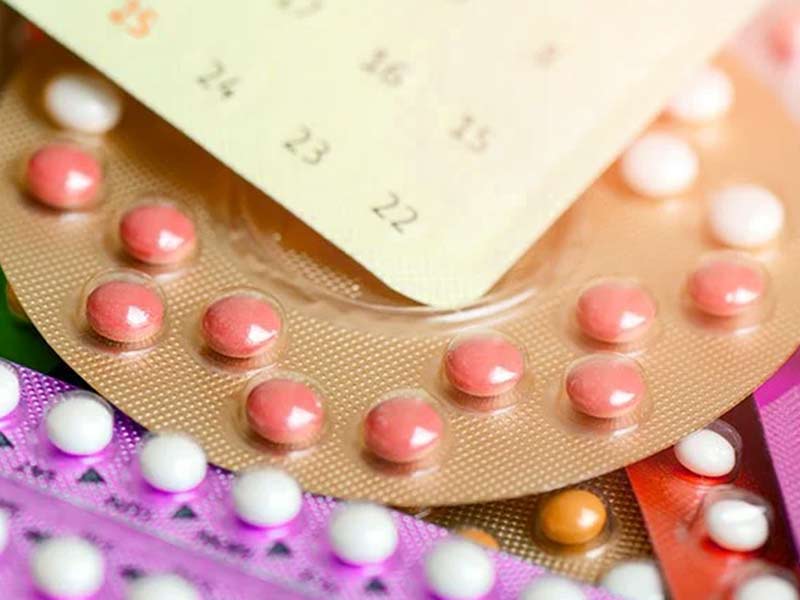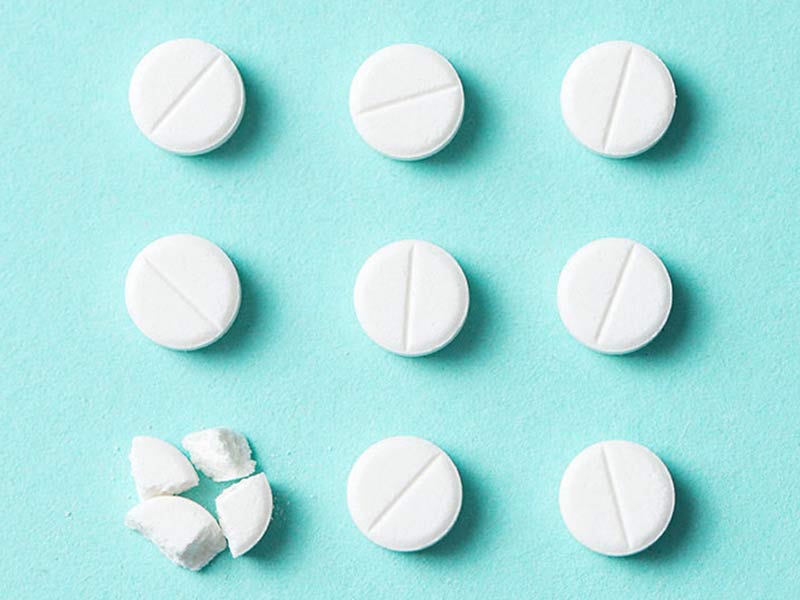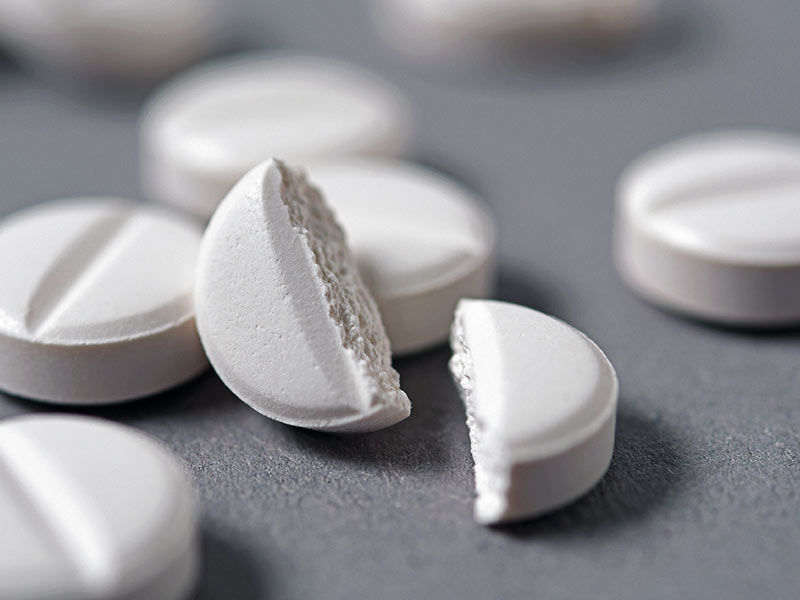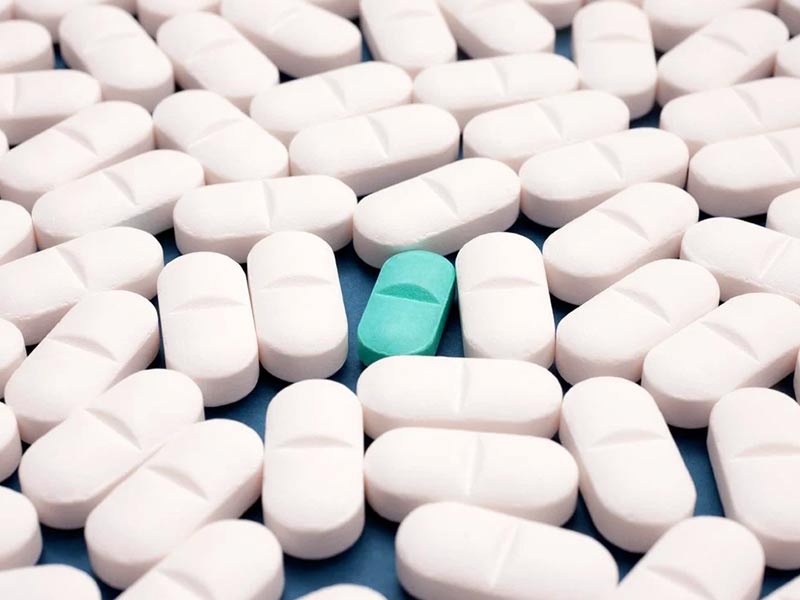1. Tablet Preparation With Powder Compression

Tablets are a tablet-like solid formulation that is pressed after mixing the drug with suitable excipients, suitable for industrial production and easy to carry, and is one of the most important and widely used dosage forms in modern solid preparations. The preparation method of tablets can be divided into: wet granulated tableting, dry granulated tableting and direct tablet pressing. Therefore, the preparation of tablets is a typical powder compression process, so the powder chemistry of the tablet material has an important impact on the quality of tablet compression molding.
1). Research Needs For Compression Molding Of Tableting Materials
In the prescription design and the screening of excipients, people often ignore the influence of the powder properties of tablet materials on tablet formability, lack of analysis of tablet material fluidity, compression molding system, quantifiable analysis, and often deal with problems such as loose sheets, splinters, stick punches, large differences in tablet weight, and difficulties in disintegration and dissolution in the production process of tablets. Lack of systematic, quantifiable analysis of compression molding of tablet-pressed materials.
2). Changes In The Physical Morphology And Properties Of The Powder During Tablet Compression
Compression is one of the main steps in tablet production and has an important impact on tablet quality. During the tablet pressing process, the powder may undergo a variety of physical morphological and property changes sequentially or simultaneously, such as filling and rearrangement, particle fragmentation and binding, elastic deformation, plastic deformation, and elastic recovery during decompression.
2. The Relationship Between The Physical Properties Of The Material And The Compression Molding Properties Of The Tablet
In recent years, many scholars at home and abroad have continuously studied and explored the relationship between the physical properties of tablet materials and the compression moldability of tablets.
1). Professor Trefford Summarized 6 Points Of View
① After compression, the particle spacing is very close, generating inter-particle forces, such as van der Waals force, electrostatic gravity, etc., so that the particles attract each other and form;
② After compression, the particles produce plastic deformation, so that the contact area between the particles increases, and the interaction force between the particles increases;
③ After the particles are deformed by compression, they chimerize with each other and produce mechanical binding forces;
④ During the compression process, the heat is generated, and the drug with a lower melting point is partially melted, and then solidified, forming a “solid bridge” between the particles so that the tablet is formed;
⑤ During the compression process, the water-soluble components in the formula are crystallized and precipitated at the contact point of the particles to form a “solid bridge”, so that the material is formed and maintains a certain hardness;
⑥ Particles are crushed by pressure to produce new surfaces, and the new surface has a large surface free energy to make particles gather and form.
2). The Study Of The Compressive Formability Of The Powder Optimizes The Tablet Processing Process
Compression molding research has certain guiding significance for the optimization of tablet prescription screening and preparation process. The results show that the physical properties of the powder, such as particle size and distribution, morphology, product type, specific surface area, etc., have a certain relationship with the compression moldability of the tablet, such as reducing the initial particle size of spray-dried lactose and starch, which can increase the mechanical strength of the tablet and enhance its compression moldability.

3. Evaluation Index Of Compression Molding
The evaluation index of compression moldability of tablets generally includes: tensile strength, that is, the maximum tension that can be resisted before the tablet is broken or broken, which is widely used to evaluate the strength of the tablet, and its size reflects the quality of the material adhesion and compression molding, under the same pressure, the greater the tensile strength, the better the formability.
4. The Relationship Between Powder Particle Size And Tablet Compression Molding
1). Particle Size And Particle Size Distribution
Particle size and particle size distribution are the most basic properties that determine the other properties of the powder, which have a significant impact on the compressibility of the tableting material, the difference in tablet weight and the dissolution of the active ingredient. The particle size of the powder contains two meanings: particle size and particle size distribution.
2). Particle Size Indicates The Method And The Meaning Of The Particle Size Distribution
Commonly used representations of particle size are: fixed directional diameter, equivalent diameter, volume equivalent diameter, effective diameter and screening diameter. Usually, the size of particles cannot be uniform, and there is a problem of particle size distribution. The particle size distribution represents the distribution of particle swarms of different particle sizes in the powder, reflecting the uniformity of particle sizes.
3). Causes Of Compression Molding Properties Of Particle Size-Influenced Tablets
During the tablet pressing process, the particle size and particle size distribution affect the rearrangement and compaction of the particles, which affects the compressibility and formability of the powder. The influence of particle size on tablet compression molding is mainly reflected in the binding area, binding strength and interaction between particles. Usually, with the reduction of the particle size of the material, the specific surface area increases, the contact point increases, the greater the deformation of the material during compression molding, the larger the binding area, the tighter the combination, the better the compression molding. Therefore, reducing the particle size is conducive to increasing the tensile strength of the tablet and is conducive to molding; For crystalline drugs, reducing the particle size will reduce the defects in the crystal structure, which in turn will reduce the fragmentation of the tablet and improve the compression moldability of the material.
(1) Experimental Observation: The Influence Of Particle Size On The Compressive Formability Of Tablets
Sun et al. studied the tableting performance of L-lysine monohydrate dihydrate powders of different particle sizes, and observed the following phenomena: under the same compaction pressure, smaller particles can form tablets with greater tensile strength, and with the reduction of powder particle size, the porosity of tablets also decreases. At low pressure, although the porosity of large particles is low, the volume of smaller particles decreases faster and the compression formability is stronger; At higher pressures, the porosity of particles of different sizes is close to each other, but due to the larger number of contact points between smaller particles, the binding area is increased and the compression formability is also strong.
(2) Experimental Observation: The Effect Of Particle Size On The Tensile Strength Of Tablets
In addition, when investigating tensile strength and yield pressure, it was observed that smaller particles were more malleable on the surface and more likely to form tablets with uniform pore distribution. In addition, the effect of particle size on the tensile strength of the tablet depends on the mechanical properties of the material, and the effect of particle size on compression molding is different for different preparation raw materials.
Generally divided into 2 cases:
① Tensile strength increases with the decrease of particle size, such as lactose, sodium citrate R, pectin;

② Tensile strength increases with the increase of particle size, such as sodium chloride, tensile strength is independent of particle size, such as polymeric calcium phosphate, sucrose, etc. Therefore, the influence of particle size on the compressive formability of the tablet is also related to the properties of the material itself, and the effect of the particle size of different materials on its compressive moldability needs to be studied in depth.
3). The Particle Size Distribution Changes The Manufacturability Of The Material
Particle size distribution can change the manufacturability of a material by influencing things like particle compression behavior and mixing uniformity. The standard deviation of the particle size distribution is too large, which will affect the content uniformity of the tablet, cause pressure changes, particle density changes and other issues. Suitable particle size and particle size distribution play an important role in the compressibility, formability and tablet weight difference of the drug powder. When the particle size distribution of the tableting material is uniform, it can improve the uniformity of the material mixing, avoid the layering of the powder caused by the vibration of the machine or the uneven stirring, and facilitate the molding of the tablet.
4). A Series Of Effects Of Changes In The Particle Size Distribution Of Materials On Tablets
Usually, the standard deviation of the particle size distribution is small, that is, the distribution is relatively concentrated, and the powder can be filled uniformly during the compression process, reduce the difference in sheet weight, and have good compression molding. During tablet production, unit operations such as granulation and compression can lead to significant changes in particle size distribution.
For example, during wet granulation, the addition of a binder solution to the mixture of drugs and excipients will cause the aggregation of particles. In addition, a portion of the API may dissolve, and partial or complete reconquesting occurs during the subsequent drying process.
When dry granulation, compression or decompression will cause particle deformation, which will affect the distribution of compressed particles, and changes in particle size distribution will cause changes in the uniformity of material mixing and compression characteristics. Therefore, in the production process of tablets, it is necessary to strictly control the particle size and particle size distribution of the material, if the drug particle size does not meet the tablet compression requirements, it is necessary to obtain the particles with the required particle size distribution through grinding and screening.
In addition, the processing of the drug induces changes in the particle size distribution of the particles, affecting the difference in tablet weight and dissolution rate of the tablet from the surface, and ultimately affecting the bioavailability.
5. Relationship Between Particle Morphology And Tablet Compression Molding
1). Particle Morphology Affects The Tableting Performance Of The Powder
Particle morphology and particle size control the rearrangement and interaction patterns of powder particles in the tablet press mold, and thus determine the final properties of the powder. Particle morphology will influence the pattern of particle rearrangement in the plane, determining the type of bonding between particles, such as interlocking or binding in the form of a solid bridge. In the compression process of pharmaceutical powder particles, the particle shape and surface roughness will affect the tableting performance of the powder, and the friction and adhesion between the irregularly shaped and longitudinal and horizontal particles are enhanced, which makes the tableting performance of the powder enhanced.
2). Particle Morphology Plays An Important Role In The Deformation Behavior Of Powders And Particles
Particle morphology plays an important role in the deformation behavior of powders and particles, such as increasing the irregularity and roughness of microcrystalline cellulose particles can change the compression behavior of particles from plastic deformation to more complex deformation processes such as crushing and friction.
3). Different Particle Forms Have Different Molding Trends
Experimental observations have found that the elongated microcrystalline cellulose particles are parallel to the punch surface during the tablet pressing process, forming a structure with low radial stress and high axial stress, which enhances the elastic recovery rate of the tablet and reduces the formability. For example, mannitol has a rougher surface than microcrystalline cellulose, the friction trend between particles is greater, and the tablet pressing performance is enhanced.

① The Particle Size Is Small, And The Surface Rough Particles Are More Plastic
Particles with small particle size, irregularity and rough surface have greater plasticity at high compression pressures and speeds, show better axial pressure transmission, can form more porosity, can be more intense, and have higher friction and adhesion tendencies.
② The Same Volume, Corrugated Or Rough Particles Have Stronger Binding Force
Different particle forms, such as spherical, cubic and needle-like powders, have different molding trends. In the case of the same volume, corrugated or rough particles have a larger surface area than smooth particles, helping to improve the ability to combine with other particles.
6. Discussion On The Design And Technical Control Of Clean Compressed Air Systems
At present, most of the research reports on powders focus on particle size and particle size distribution, morphology, mechanical properties, etc., and pay less attention to other physical properties, such as surface area. The surface properties of powder materials have an important impact on their fluidity and intermolecular interactions.
Studies have shown that the specific surface area and pore volume can reflect the surface morphology of the particles. Particles with small specific surface area and pore volume are usually smooth on the surface, with large elasticity and poor adhesion; The surface roughness of the particles, which is larger than the surface volume and pore volume, increases, and there are cracks, holes and depressions on it, which increases the binding force between the particles, provides conditions for mechanical occlusion during compression, and improves the compression molding performance.
7. Relationship Between Crystal Form And Tablet Compression molding
1). The Net Mechanical Properties Of The Tablets Are Permanent Particle Deformation Between Particles
For a given material, the net mechanical strength of the tablets is directly dependent on the binding area between the particles due to permanent deformation, and the integrity of the tablets can only be guaranteed when the contact area between the particles is retained after the compression cycle is over and the compression stress is lifted. The binding region between particles is not only affected by factors such as particle size and shape, but also by the mechanical properties and structure of the crystal.
2). Crystal Formation Or Synthesis Pathways Have Different Effects On Tablet Compression Molding
Substances with the same chemical structure, due to different synthesis or generation pathways, will appear different crystal forms, and different crystal forms will have different effects on compression moldability. For example, when studying the influence of the crystal structure of acetamidovin on compressibility, it was observed that compared with monoclinic crystals, the orthophobic crystal structure under low pressure was greatly fragmented, but the plastic deformation increased under high pressure, and elastic recovery was not easy to occur during the decompression process.
Under normal circumstances, the crystal symmetry of the cubic strain is good, the surface area is large, and it is easy to form when compressed; Scaly or needle-like crystals are arranged in layers, and the compressed tablets are easy to layer and cannot be directly pressed; Dendritic crystals are prone to deformation surfaces embedded with each other, good compressibility, easy to form, but poor fluidity. Therefore, the crystal structure and morphology have a significant impact on the compression moldability of the tablet, and the compressibility of the powder particles can be predicted to a certain extent through the study of the interrelationship between the crystal structure and mechanical properties of the material.
8. Discussion And Outlook

1). Summary Of The Influencing Factors Of Tablet Compression Molding
In summary, the particle size, particle size distribution, particle form, specific surface area, crystal form, etc. of the powder particles jointly affect the compression moldability of the tablet, but at the same time, these factors are interrelated and affect each other, and ultimately determine the compression moldability of the tablet. In general, the specific surface area is large, the particle size is small, the surface is rough, and the irregular particle compression moldability is better, especially when the material is plastically deformed.
2). The Research Value Of Factors Influencing The Compression Molding Properties Of Tablets
Starting from the powder nature of the material, summarizing and summarizing the physical properties indicators that may affect the molding of tablets is helpful to solve the problems that may exist in prescription design, product research and development, process scale-up and large-scale production, change the blindness of relying on empirical intuitive judgment and processing problems, and have important guiding significance for improving the preparation process of tablet production.










